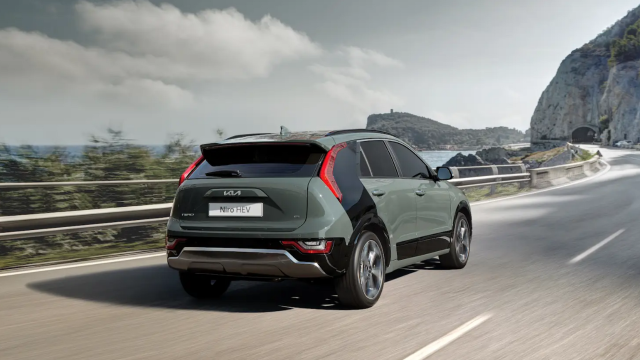Hybrid cars have long been considered the transitional middle-ground between petrol vehicles and electric vehicles, but there’s a lot of complication and confusion around the technology and what they’re able to achieve.
One of the most fundamental questions people have about hybrids is how they are different from PHEVs (plug-in hybrid electric vehicles), along with how they differ from EVs on cost, range and environmental impact.
We’re answering all your hybrid and PHEV questions right here.
What is a hybrid car?
A hybrid is a car that uses petrol as its primary fuel source and electricity as its secondary, with stored electricity created through regenerative braking or an internal generator. Batteries in traditional hybrids typically cannot be charged by being plugged in, with energy mostly derived from the petrol engine.
Electric power in a hybrid vehicle may only kick in at low speeds, meaning the petrol engine would only be used when conditions become more demanding. This, theoretically, means that they’re slightly better for the environment, however, they’re still producing emissions by being fuel-reliant.
Hybrids also boast a fuel economy benefit over petrol engine vehicles by producing torque instantly (if electric power is used at lower speeds), however, again, they’re still reliant on petrol. They’re also separate from PHEVs.
What is a PHEV car?
PHEVs, or plug-in hybrid electric vehicles, are again slightly better for the environment. Instead of being primarily reliant on petrol, PHEVs are more reliant on electricity, capable of driving distances without using petrol at all. An example is the Mitsubishi Outlander PHEV, which we reviewed.
Most PHEVs include much smaller batteries than EVs, capable of travelling between 40km and 100km WLTP depending on the model. This is pretty standard for a daily drive and you could, theoretically, own a PHEV and never be reliant on its petrol engine, or only use the petrol on larger trips.
But again, petrol still makes up most of their practical use. Internally, PHEVs typically include a generator that converts the petrol into battery power. If you run out of battery power, the car will function like a traditional hybrid, relying on stored petrol for standard driving.
What is the difference between a hybrid and a PHEV?
The big difference between hybrid cars and PHEVs is that hybrids can’t be plugged in and are mostly reliant on petrol, whereas PHEVs can be plugged in and driven without petrol being used.
Both cars operate similarly, but with a PHEV you get the best of both ICE vehicles (the long range of internal combustion engines) and the best of EVs (the torque and electric driving on shorter drives).
What are the main advantages and disadvantages of a hybrid car?
Hybrids and PHEVs offer a fuel economy advantage over petrol engine vehicles by using electricity at lower speeds, generating torque instantly without needing to generate the revs of a petrol engine.
Additionally, they offer a slight environmental benefit over petrol vehicles by offering electricity as a fuel, however, this is more of an advantage of EVs and not really a talking point for traditional hybrids above lower speeds.
Because of the extra technology, hybrid cars and PHEVs are typically more expensive than their ICE alternatives, but less expensive than fully-electric options. Depending on where you get your car serviced, they may also be more expensive to maintain.
Hybrid cars in Australia
PHEV vehicles are available from most automakers in Australia, including from Toyota, Mitsubishi, Mazda, Honda, MG, Ford, and BMW. Hybrid cars are also widely available.
Many automakers that have hybrid cars in Australia haven’t released a fully electric EV in the country just yet, but we’re bound to see this change down the line.
Should I get a hybrid car instead of an EV?
While the cost of EVs certainly keeps some shoppers from buying them, hybrid cars and PHEVs offer an interesting prospect of electrification at a lower price without the range limits of an electric vehicle.
For drivers who might never take advantage of the plug-in capabilities in a PHEV, you’ll never really get the EV benefits of that car. In a standard hybrid, you’re basically getting a petrol vehicle with some of the performance benefits of an EV.
It’s a decision that’s entirely dependent on your budget and what you need from a vehicle.
For the moment, as EVs come down in price and increase in range, it’ll be interesting to see if hybrids retain their value prospect.
Image: Kia
Want more Aussie car news? Here’s every EV we’ve reviewed in the last two years, all the EVs we can expect down under soon, and our guide to finding EV chargers across the country. Check out our dedicated Cars tab for more.
